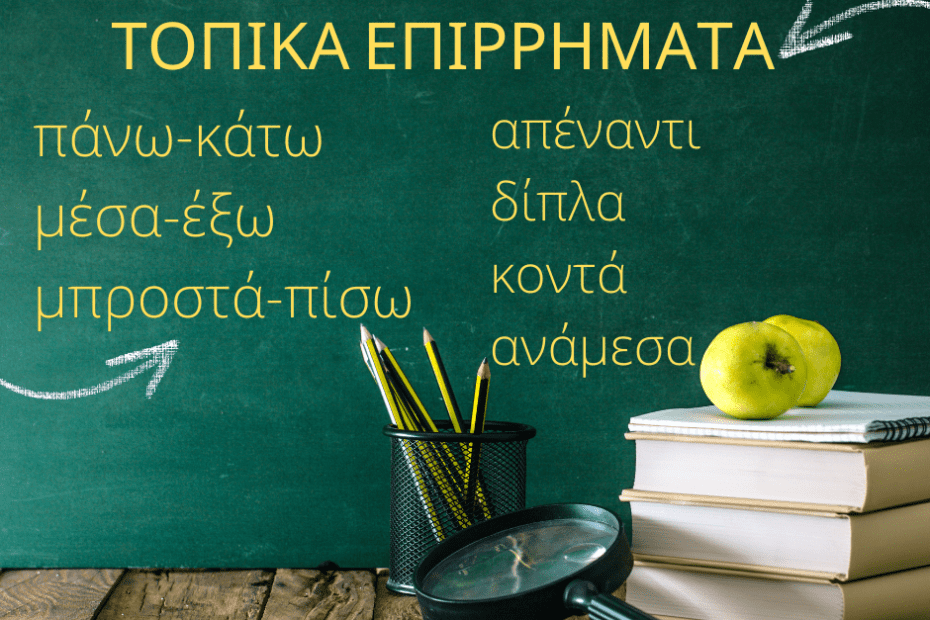We have already talked about some adverbs with slightly different ending but the same stem. Let us see now the most popular ones, the adverbs of place which mainly tell us where something is! They answer to the question “where?”, or «πού?» (pu) in Greek: «Πού είναι το μήλο?» (pu íne to mílo) – ”Where’s the apple?”:
- Πάνω από/σε = above/on à Το μήλο είναι πάνω από το κουτί / στο κουτί (to mílo íne páno apó to / sto kutí) = The apple is above / on the box.
- Κάτω από = under à Το μήλο είναι κάτω από το κουτί (to mílo íne káto apó to kutí) = The apple is under the box.
- Απέναντι από = opposite à Το μήλο είναι απέναντι από το κουτί (to mílo íne apénadi apó to kutí) = The apple is opposite the box.
- Μπροστά από = in front of à Το μήλο είναι μπροστά από το κουτί (to mílo íne brostá apó to kutí) = The apple is in front of the box.
- Πίσω από = behind à Το μήλο είναι πίσω από το κουτί (to mílo íne píso apó to kutí) = The apple is behind the box.
- Έξω από = outside à Το μήλο είναι έξω από το κουτί (to mílo íne éxo apó to kutí) = The apple is outside the box.
- Μέσα σε = inside à Το μήλο είναι μέσα στο κουτί (to mílo íne mésa sto kutí) = The apple is inside the box.
- Δίπλα σε = next to à Το μήλο είναι δίπλα στο κουτί (to mílo íne thípla sto kutí) = The apple is next to the box.
- Κοντά σε = close to à Το μήλο είναι κοντά στο κουτί (to mílo íne kodá sto kutí) = The apple is close to the box.
- Ανάμεσα σε…και σε = between à Το μήλο είναι ανάμεσα στο μικρό και στο μεγάλο κουτί (to mílo íne anámesa sto mikró kie sto meghálo kutí) = The apple is between the small and the big box.
And where is your apple?
